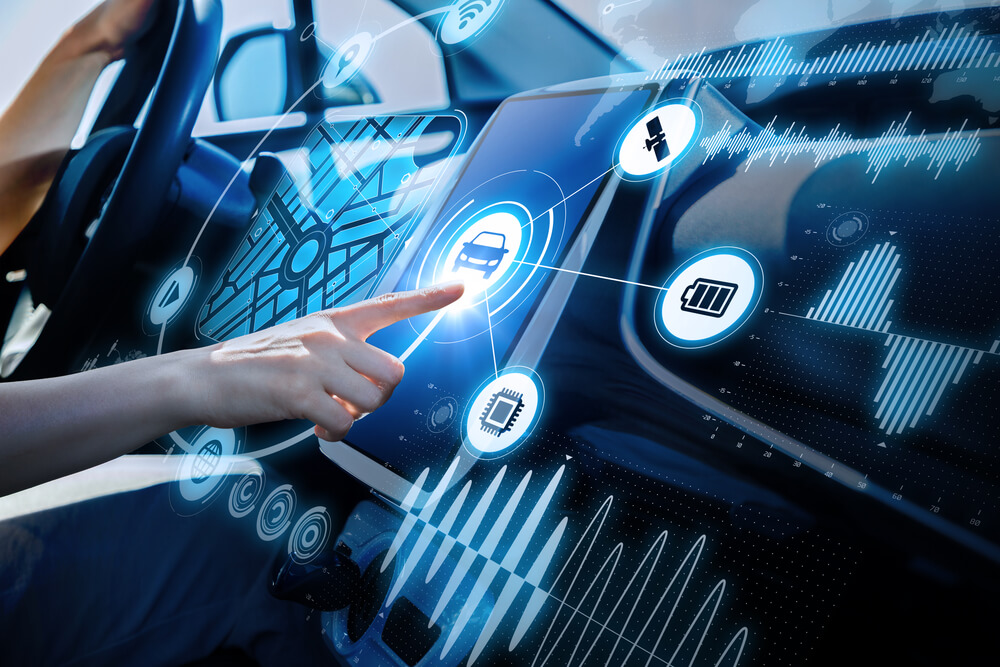Connected vehicles are designed to receive updates, including feature upgrades and security patches, over the air (OTA) and transmit operation data from onboard systems to the cloud
Today, almost every car has some degree of digital features. It could be a map, an infotainment system, or very advanced versions of these in high-definition 3D. Cars are transforming into connected vehicles through applications and technologies such as advanced driver assistance systems (ADAS), autonomous computers, enhanced infotainment, over-the-air (OTA) updates, and V2X or vehicle-to-X technology where the vehicle communicates with X, with X being another vehicle, roadside infrastructure or cyclists, for example. With these new driving experiences, it is estimated that there will be 115 million connected vehicle shipments around the world in 2025, and more than 10 million vehicles will be capable of short-range V2X communication by the same period. A connected vehicle has the potential to benefit not just the buyer or the car company, but also others in the overall ecosystem.
A treasure trove of value
Connected vehicles have undoubtedly disrupted the auto industry. Connected cars are enabling carmakers to create deep differentiation for their brands while offering immense safety and comfort benefits for drivers and passengers.
Through innovation in V2X, information such as traffic light recognition, real-time traffic information, and other important information can be made available to the driver. This can help one to plan their travel route better. V2X technology can also offer better safety to pedestrians and cyclists, as it can help advanced connected vehicles detect and therefore avoid them. ADAS technology, which gives a vehicle a good understanding of its environment, can also help with emergency braking, lane-change warning, and pedestrian warning to name a few.
From the government and municipality perspective, data collected from the connected vehicle or V2X technology can help them better manage traffic and understand why some junctions are busier than others or why certain roads are more accident-prone. Connected vehicles can also help with information such as identifying potholes.
As the automotive industry enables more connected features, the demand for digital storage and memory will continue to rise. Today, cars are like little data centres on wheels. As per a Western Digital estimate, the lines of software code in automobiles have already outstripped the amount of code in fighter jets, laptops, and social media sites, and are expected to continue to grow dramatically.
Storage at the centre
It is estimated that over the next decade, a minimum of 2TB to as much as 11TB of storage will be needed to support the needs of in-vehicle storage at different autonomy levels. By 2025, around 30% of new cars sold globally will support Level 2 autonomy, which means the vehicle can control both steering and accelerating/decelerating, or above. This proportion will exceed 50% by 2030.

Senior Director – Sales, India, Western Digital
With this rise, it is important for OEMs to consider their data strategy thoughtfully, and not make storage an afterthought. The requirements and challenges of automotive storage vary significantly across different use cases. For example, data is required to operate under extreme temperature conditions- in sweltering summers or freezing winters. Irrespective of weather, climate, or terrain, a car’s interface, and safety features need to be fully functional. Moreover, some data in the connected car is only kept for a few seconds, while other data must be retained for days, months, or even years. As a result, different storage interfaces, performance, and endurance levels are needed such as removable SD cards and BGA packaged e.MMC, UFS and NVM drives.
The number and type of applications, sensors, and cameras will continue to grow, and they will need to be regularly maintained and updated during a car’s lifespan. It is normal that connected vehicles are designed to receive updates, including feature upgrades and security patches, over the air (OTA) and transmit operation data from onboard systems to the cloud. This means the importance of data and data storage will only continue to grow in connected cars. The storage industry must continue to innovate to offer solutions as per the changing requirements of the automotive industry.



